Intel 11th Generation Core Tiger Lake-H Performance Review: Fast and Power Hungry
by Brett Howse & Andrei Frumusanu on May 17, 2021 9:00 AM EST- Posted in
- CPUs
- Intel
- 10nm
- Willow Cove
- SuperFin
- 11th Gen
- Tiger Lake-H
CPU Tests: Legacy and Web
In order to gather data to compare with older benchmarks, we are still keeping a number of tests under our ‘legacy’ section. This includes all the former major versions of CineBench (R15, R11.5, R10) as well as x264 HD 3.0 and the first very naïve version of 3DPM v2.1. We won’t be transferring the data over from the old testing into Bench, otherwise it would be populated with 200 CPUs with only one data point, so it will fill up as we test more CPUs like the others.
The other section here is our web tests.
Web Tests: Kraken, Octane, and Speedometer
Benchmarking using web tools is always a bit difficult. Browsers change almost daily, and the way the web is used changes even quicker. While there is some scope for advanced computational based benchmarks, most users care about responsiveness, which requires a strong back-end to work quickly to provide on the front-end. The benchmarks we chose for our web tests are essentially industry standards – at least once upon a time.
It should be noted that for each test, the browser is closed and re-opened a new with a fresh cache. We use a fixed Chromium version for our tests with the update capabilities removed to ensure consistency.
Mozilla Kraken 1.1
Kraken is a 2010 benchmark from Mozilla and does a series of JavaScript tests. These tests are a little more involved than previous tests, looking at artificial intelligence, audio manipulation, image manipulation, json parsing, and cryptographic functions. The benchmark starts with an initial download of data for the audio and imaging, and then runs through 10 times giving a timed result.
We loop through the 10-run test four times (so that’s a total of 40 runs), and average the four end-results. The result is given as time to complete the test, and we’re reaching a slow asymptotic limit with regards the highest IPC processors.
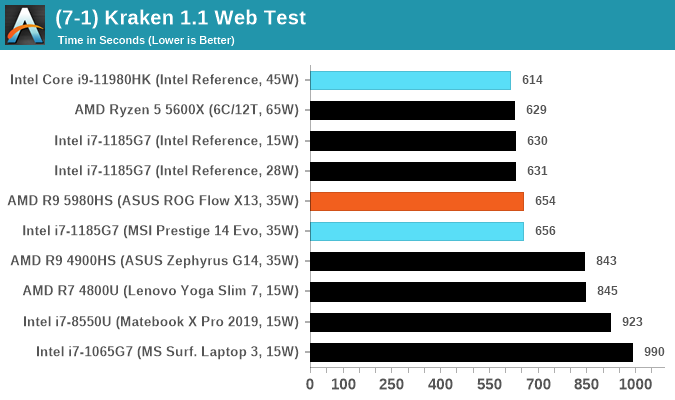
Google Octane 2.0
Our second test is also JavaScript based, but uses a lot more variation of newer JS techniques, such as object-oriented programming, kernel simulation, object creation/destruction, garbage collection, array manipulations, compiler latency and code execution.
Octane was developed after the discontinuation of other tests, with the goal of being more web-like than previous tests. It has been a popular benchmark, making it an obvious target for optimizations in the JavaScript engines. Ultimately it was retired in early 2017 due to this, although it is still widely used as a tool to determine general CPU performance in a number of web tasks.
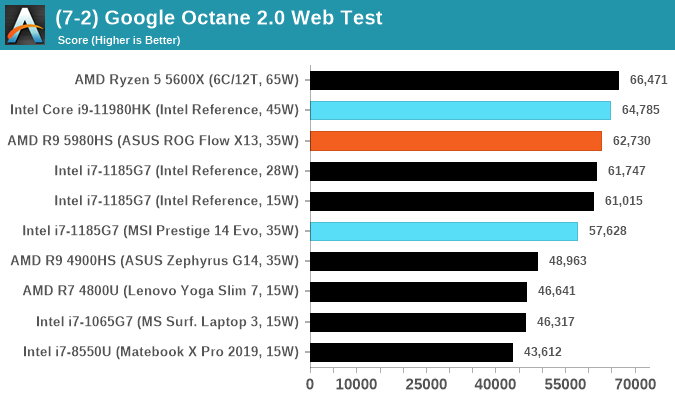
Speedometer 2: JavaScript Frameworks
Our newest web test is Speedometer 2, which is a test over a series of JavaScript frameworks to do three simple things: built a list, enable each item in the list, and remove the list. All the frameworks implement the same visual cues, but obviously apply them from different coding angles.
Our test goes through the list of frameworks, and produces a final score indicative of ‘rpm’, one of the benchmarks internal metrics.
We repeat over the benchmark for a dozen loops, taking the average of the last five.
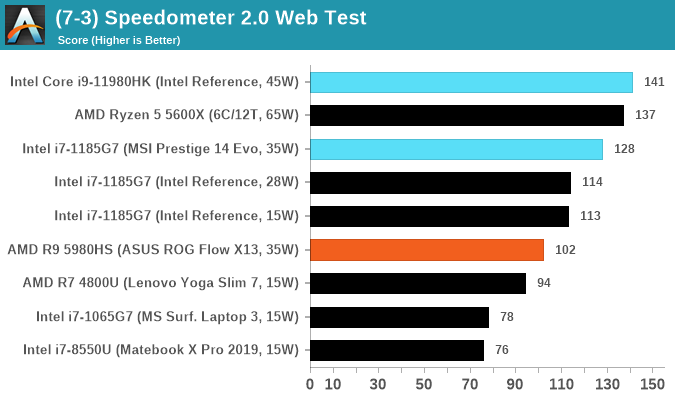
Legacy Tests

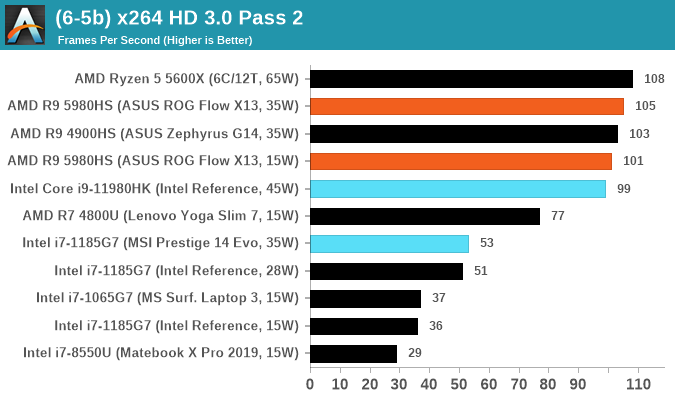
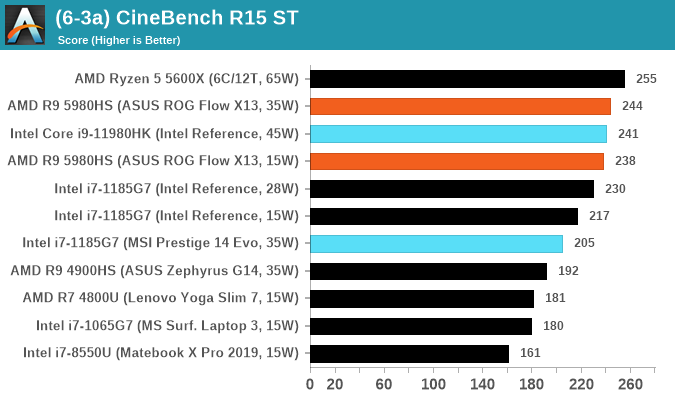
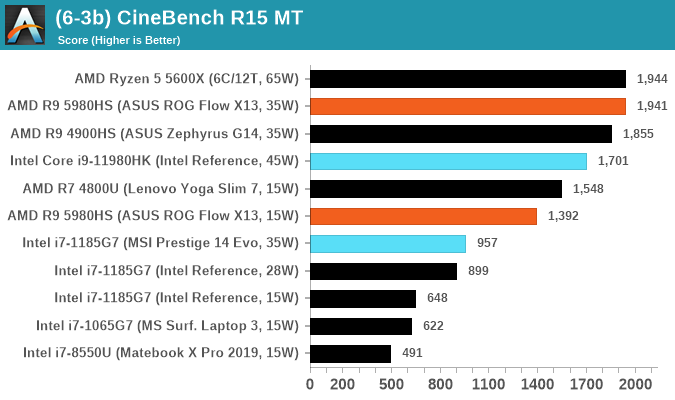


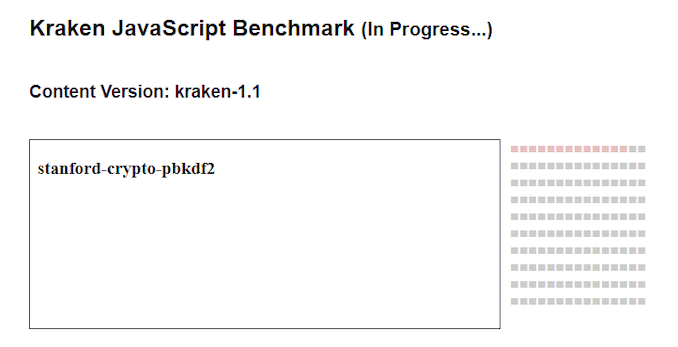
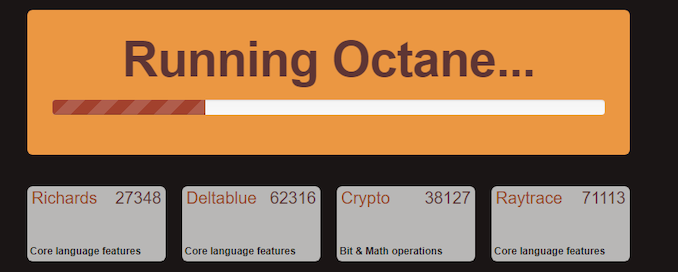









229 Comments
View All Comments
back2future - Tuesday, May 18, 2021 - link
it's almost one could skip PCIe4 if early 2022 PCIe5 is stable on power management and performance expectations on mainboards?mode_13h - Thursday, May 20, 2021 - link
> it's almost one could skip PCIe4 if early 2022 PCIe5 is stable ... on mainboards?Uh, I'm still eager to see exactly how Intel is going to use PCIe 5, in Alder Lake. I suspect it'll be used only for the DMI link to the chipset, in fact.
Since graphics cards and M.2 SSDs aren't even close to maxing PCIe 4, I struggle to see why they would bother with the added cost and potential issues of supporting 5.
heickelrrx - Monday, May 17, 2021 - link
you can put 4x link on Video card and get 8x speed on Gen 3mean they can put more stuff, with less link, not faster stuff
mode_13h - Tuesday, May 18, 2021 - link
> you can put 4x link on Video card and get 8x speed on Gen 3In terms of power-efficiency, I'd bet the wider, slower link is better.
> mean they can put more stuff, with less link, not faster stuff
It's a laptop. So, prolly not gonna run out of PCIe lanes.
gagegfg - Monday, May 17, 2021 - link
"and if anticipated, great gaming performance"...Inside this notebook case he had a hard time controlling the temperature, if you add a 100W GPU, where is the rest for this cpu?
mmm .... it's going to be interesting.
Matthias B V - Monday, May 17, 2021 - link
Most OEMs still prefer Intel as it has capacity that AMD can't offer and even more it has better features and integration such as AV1 coding, USB / TB 4.0, Intel WIFI etc.Also Intels provides better support for OEMs in design and issues.
Gigaplex - Monday, May 17, 2021 - link
AMD systems can provide TB support, there's no technical limitation preventing it. Intel WiFi chips are standalone cards, which also work fine in AMD systems (my AMD board has Intel WiFi). There's no reason to use an Intel CPU for either of those features.Retycint - Monday, May 17, 2021 - link
The fact that not a single AMD laptop has thunderbolt, points to an issue with cost of implementation/PCI lanes limitations etc. which apparently doesn't exist on Intel CPUs, given how many Intel laptops come with TB as default. This is a fact, and talking about what's possible theoretically doesn't change the facts that AMD systems lack TBCityBlue - Monday, May 17, 2021 - link
> The fact that not a single AMD laptop has thunderbolt, points to an issue with cost of implementation/PCI lanes limitations etc.Perhaps. Or it's simply a reflection of the fact that there is only niche demand for TB.
It's on Intel based laptops because it's supported by the chipset so pretty much a no-brainer (or alternatively, Intel mandates it is included, in order to try and make it more relevant?)
However the vast majority of laptop consumers don't need, want or care about TB, so the extra cost to include it in AMD laptops doesn't appear justified. I'm sure a vendor could include TB on an AMD laptop if they ever thought they'd get a reasonable return on the extra cost.
And maybe now that Intel have been kicked in to touch by Apple, Intel might lose interest in TB in future.
TB has its fans, but it also has the distinct whiff of being the next FireWire.
RobJoy - Tuesday, May 18, 2021 - link
The fact that TB still exists, baffles me.We all should move on.